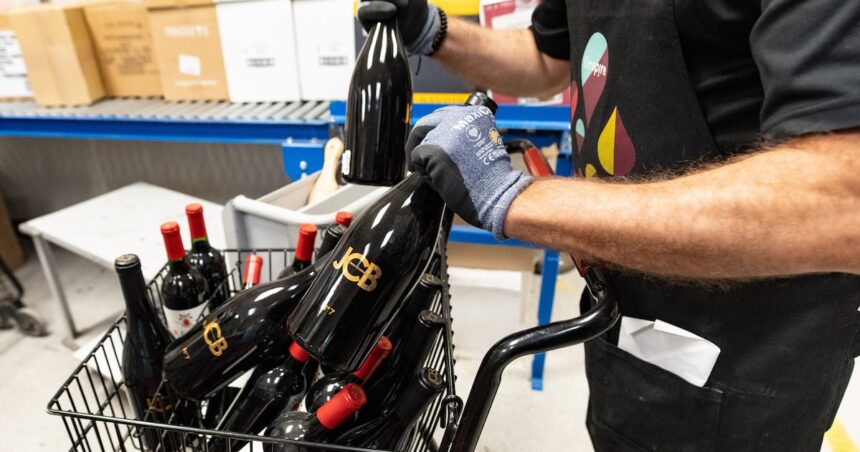The numbers finally tell the story that barkeeps and liquor store managers across Canada have been whispering about for months. Provincial alcohol sales have dropped nearly 17% since March when several provincial liquor authorities pulled American products from shelves in retaliation against Trump’s second-term tariffs on Canadian lumber, steel, and agricultural goods.
Standing in his Toronto warehouse surrounded by crates of Ontario craft spirits and wines, distributor James McKenzie surveys what he calls “the new normal” in Canadian alcohol distribution. “We’ve gone from 60% American imports to almost zero in four months,” he explains, gesturing to empty spaces once filled with Kentucky bourbon and California wines. “Some consumers are angry, some are patriotic about it. But everyone’s drinking less.”
According to data released yesterday by Statistics Canada, overall alcohol sales have declined $1.2 billion in the second quarter of 2025, with the steepest drops in Quebec and British Columbia. The Liquor Control Board of Ontario reports that while Canadian product sales have increased 23%, they haven’t offset the loss of American imports that previously dominated certain categories.
“This is unprecedented market disruption,” says Maryam Ghani, senior trade analyst at the C.D. Howe Institute. “We’re witnessing the most significant realignment of North American alcohol trade since Prohibition, and Canadian consumers are bearing the economic and cultural costs.”
The trade dispute began in February when President Trump fulfilled his campaign promise to “put America first in lumber” by imposing 40% tariffs on Canadian softwood. Canada’s response came swiftly through provincial liquor authorities, who maintain constitutional jurisdiction over alcohol sales. By April, the LCBO, SAQ, and BC Liquor Stores had removed American products, calling it a “purchasing pause” rather than a formal ban to avoid WTO complications.
In Quebec City, sommelier Pierre Bouchard has rebuilt his restaurant’s wine list from scratch. “We lost 70% of our inventory overnight,” he says during a phone interview. “My customers still ask for California cabernet, but I’m introducing them to excellent Canadian and South American alternatives. Sometimes they’re pleased, sometimes not.”
The retail landscape has shifted dramatically. Walk into any Canadian liquor store today and you’ll notice prominent “Made in Canada” displays where Jack Daniel’s and Jim Beam once stood. Industry data shows Canadian whisky sales up 42%, while domestic craft distilleries report struggling to meet sudden demand.
“We’re working around the clock,” says Victoria-based distiller Sarah Chen. “Our production has tripled, but we can’t age whisky faster than physics allows. The shortage of American bourbon created opportunity, but also immense pressure.”
For Canadian wineries, the impact has been mixed. Ontario’s Niagara region and British Columbia’s Okanagan Valley report record sales but increased scrutiny from consumers accustomed to different flavor profiles and price points. “People expect $15 Canadian wine to taste like $15 California wine, and they’re different products,” notes sommelier Bouchard.
The economic ripple effects extend beyond liquor stores. According to the Canadian Restaurant Association, establishments that built their identity around American spirits—bourbon bars, California wine bistros—have seen revenue decline up to 30%. Meanwhile, bars specializing in Canadian products report gains.
“The customer psychology is fascinating,” says Dr. Elise Wong, consumer behavior researcher at Ryerson University. “Canadians are shifting consumption patterns based on nationalism, but also discovering they can’t simply substitute certain products. Consumption habits formed over decades don’t change overnight.”
Economists warn the dispute highlights vulnerabilities in North American trade integration. “What we’re seeing is how quickly integrated supply chains can unravel,” says Thomas Bergeron, international trade professor at McGill University. “The USMCA was supposed to prevent exactly this type of disruptive trade action.”
The Canadian government estimates lost tax revenue from reduced alcohol sales at approximately $267 million for the second quarter alone, while American producers report over $800 million in lost Canadian export revenue. Industry associations on both sides of the border have urged resolution, but negotiations remain stalled.
In Vancouver, bar owner Derek Calhoun has created a creative workaround—a “BYOB” policy specifically for American spirits. “Customers bring their personal bottles of bourbon they stockpiled when the news broke,” he laughs. “We charge a corkage fee. It’s technically legal and keeps our regulars happy.”
The dispute has accelerated trends in Canadian drinking culture that were already underway. Statistics Canada notes that Canadian craft beer consumption had been rising steadily for a decade before the trade dispute, and domestic wine quality has improved dramatically.
As summer approaches, industry observers question whether provincial liquor authorities will maintain their stance through peak tourism season. Tourism industry representatives have lobbied for exceptions, warning that American visitors expect access to familiar brands.
“This isn’t just about alcohol—it’s about sovereignty and leverage,” says Ghani. “Provincial liquor monopolies give Canada rare leverage against American trade aggression. The question is how long consumers will accept paying the price for this political strategy.”
For now, Canadians are adapting—some reluctantly, others enthusiastically embracing domestic alternatives. McKenzie, surveying his warehouse of Canadian products, remains cautiously optimistic: “Crisis creates opportunity. Ten years from now, we might look back and see this as the moment that transformed Canadian drinking culture permanently.”






